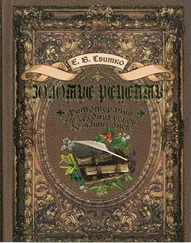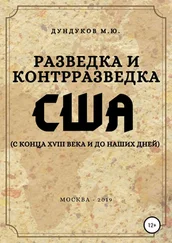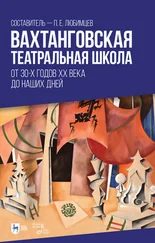Kanwisher, N., McDermott, J., and M. M. Chun The fusiform face area: A module in human extrastriate cortex specialized for face perception // Journal of Neuroscience 17 (11) 1997: 4302–4311.
Klin, A., Lim, D. S., Garrido, P., Ramsay, T., and W. Jones Two-year-olds with autism orient to non-social contingencies rather than biological motion // Nature 459 (2009): 257–261.
Langer, S. K. Philosophy in a New Key: A Study in the Symbolism of Reason, Rite, and Art. 3 rded. Cambridge, MA: Harvard University Press, 1979.
Mitchell, J. P., Banaji, M. R., and C. N. MacRae The link between social cognition and selfreferential thought in the medial prefrontal cortex // Journal of Cognitive Neuroscience 17 (8) 2005: 1306–1315.
Ochsner, K. N., Knierim, K., Ludlow, D., Hanelin, J., Ramachandran, T., and S. Mackey Reflecting upon feelings: An fMRI study of neural systems supporting the attribution of emotion to self and other // Journal of Cognitive Neuroscience 16 (10) 2004: 1748–1772.
Ohnishi, T., Moriguchi, Y., Matsuda, H., Mori, T., Hirakata, M., and E. Imabayashi The neural network for the mirror system and mentalizing in normally developed children: An fMRI study // Neuroreport 15 (9) 2004: 1483–1487.
Pelphrey, K. A., Morris, J. P., and G. McCarthy Grasping the intentions of others: The perceived intentionality of an action influences activity in the superior temporal sulcus during social perception // Journal of Cognitive Neuroscience 16 (10) 2004: 1706–1716.
Pelphrey, K. A., Sasson, N. J., Reznick, J. S., Paul, G., Goldman, B. D., and J. Piven Visual scanning of faces in autism // Journal of Autism and Developmental Disorders 32 (2002): 249–261.
Perner, J., Aichhorn, M., Kronbichler, M., Staffen, W., and G. Ladurner Thinking of mental and other representations. The roles of left and right temporoparietal junction // Social Neuroscience 1 (2006): 245–258.
Perrett, D. I., Smith, P. A., Potter, D. D., Mistlin, A. J., Head, A. S., Milner, A. D., and M. A. Jeeves Visual cells in the temporal cortex sensitive to face view and gaze direction // Proceedings of the Royal Society of London, Series B: Biological Science 223 (1985): 293–317.
Piaget, J. Child’s Conception of the World. London: Routledge & Kegan Paul, 1929.
Puce, A., Allison, T., Asgari, M., Gore, J. C., and G. McCarthy Differential sensitivity of human visual cortex to faces, letter strings, and textures: A functional magnetic resonance imaging study // Journal of Neuroscience 16 (16) 1996: 5205–5215.
Puce, A., Allison, T., Bentin, S., Gore, J. C., and G. McCarthy Temporal cortex activation in humans viewing eye and mouth movements // Journal of Neuroscience 18 (1998): 2188–2199.
Ramachandran, V. S. Beauty or brains // Science 305 (2004): 779–780.
Riegl, A. The Group Portraiture of Holland. Intro. by W. Kemp. Los Angeles: Getty Research Institute for the History of Art and the Humanities, 1999.
Rizzolatti, G., Fadiga, L., Gallese, V., and L. Fogassi Premotor cortex and the recognition of motor actions // Cognitive Brain Research 3 (2) 1996: 131–141.
Saxe, R. Uniquely human social cognition // Current Opinion in Neurobiology 16 (2006): 235–239.
Saxe, R., Carey, S., and N. Kanwisher Understanding other minds: Linking developmental psychology and functional neuroimaging // Annual Review of Psychology 55 (2004): 87–124.
Saxe, R., and N. Kanwisher People thinking about thinking people. The role of the temporo-parietal junction in “theory of mind” // NeuroImage 19 (4) 2003: 1835–1842.
Saxe, R., Xiao, D. K., Kovacs, G., Perrett, D. I., and N. Kanwisher A region of right posterior temporal sulcus responds to observed intentional actions // Neuropsychologia 42 (11) 2004: 1435–1446.
Singer, T., Seymour, B., O’Doherty, J., Kaube, H., Dolan, R. J., and C. Frith Empathy for pain involves the affective but not sensory components of pain // Science 303 (2004): 1157–1162.
Strack, F., Martin, L. L., and S. Stepper Inhibiting and facilitating conditions of the human smile: A nonobtrusive test of the facial feedback hypothesis // Journal of Personality and Social Psychology 54 (5) 1988: 766–777.
Yarbus, A. L. Eye Movements and Vision. New York: Plenum Press, 1967. [Рус. оригинал: Ярбус А. Л. Роль движений глаз в процессе зрения . М.: Наука, 1965.]
Zaki, J., Weber, J., Bolger, N., and K. Ochsner The neural bases of empathic accuracy // Proceedings of the National Academy of Sciences USA 106 (27) 2009: 11382–11387.
Глава 26. Как мозг регулирует
эмоции и эмпатию
Berridge, K. C., and M. L. Kringelbach Effective neuroscience of pleasure: Rewards in humans and animals // Psychopharmacology 199 (2008): 457–480.
Blakeslee, S., and M. Blakeslee The Body Has a Mind of Its Own. How Body Maps in Your Brain Help You Do (Almost) Everything Better. New York: Random House, 2007.
Cohen, P. Next big thing in English: Knowing that they know that you know // New York Times, April 1: C1.
Damasio, A. The somatic marker hypothesis and the possible functions of the prefrontal cortex // Proceedings of the Royal Society of London B 351 (1996): 1413–1420.
Damasio, A. The Feeling of What Happens: Body and Emotion in the Making of Consciousness. New York: Harcourt Brace, 1999.
Darwin, C. The Expression of the Emotions in Man and Animals. New York: Appleton-Century-Crofts, 1872.
Ditzen, B., Schaer, M., Gabriel, B., Bodenmann, G., Ehlert, U., and M. Heinrichs Intranasal oxytocin increases positive communication and reduces cortisol levels during couple conflict // Biological Psychiatry 65 (9) 2009: 728–731.
Donaldson, Z. R., and L. J. Young Oxytocin, vasopressin, and the neurogenetics of sociality // Science 322 (2008): 900–904.
Gray, J. A., and N. McNaughton The Neuropsychology of Anxiety: An Enquiry into the Functions of the Septo-Hippocampal System. 2 nded. Oxford Psychology Series No. 33. Oxford: Oxford University Press, 2000.
Insel, T. R. The challenge of translation in social neuroscience: A review of oxytocin, vasopressin, and affiliative behavior // Neuron 65 (2010): 768–779.
Jhou, T. C., Fields, H. L., Baxter, M. G., Saper, C. B., and P. C. Holland The rostromedial tegmental nucleus (RMTg), a GABAergic afferent to midbrain dopamine neurons, encodes aversive stimuli and inhibits motor responses // Neuron 61 (5) 2009: 786–800.
Kamin, L. J. Predictability, Surprise, Attention, and Conditioning / In: Punishment and Aversive Behavior . Campbell, B. A., and R. M. Church, eds. New York: Appleton-Century-Crofts, 1969. Pp. 279–296.
Kampe, K. K., Frith, C. D., Dolan, R. J., and U. Frith Reward value of attractiveness and gaze // Nature 413 (2001): 589.
Kandel, E. R. Biology and the Future of Psychoanalysis / In: Psychiatry, Psychoanalysis, and the New Biology of Mind. Arlington, VA: American Psychiatric Publishing, 2005. Ch. 3.
Kirsch, P., Esslinger, C., Chen, Q., Mier, D., Lis, S., Siddhanti, S., Gruppe, H., Mattay, V. S., Gallhofer, B., and A. Meyer-Lindenberg Oxytocin modulates neural circuitry for social cognition and fear in humans // Journal of Neuroscience 25 (2005): 11489–11493.
Kosfeld, M., Heinrichs, M., Zak, P. J., Fischbacher, U., and E. Fehr Oxytocin increases trust in humans // Nature 435 (2005): 673–676.
Читать дальше
Конец ознакомительного отрывка
Купить книгу







![Франк Трентманн - Эволюция потребления [Как спрос формирует предложение с XV века до наших дней]](/books/403210/frank-trentmann-evolyuciya-potrebleniya-kak-spros-fo-thumb.webp)




